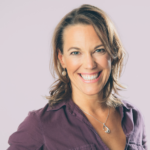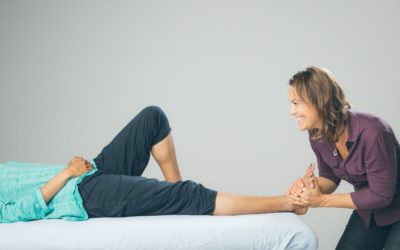Interview with Rebecca Lowe PT and Rob Allison, client/patient.
The patient/PT team: I believe that I am just a part of a patient’s team. I bring some strengths/skills to the team, but so do they. Each person has, at the minimum, their own experience that they bring to the assessment and treatments. But each person usually has more than that – they have their motivation, their investment in the outcome, their goals, they have their time, their knowledge of previous treatments, usually they have other health care team members, and varying strengths and skills.
Can you tell a difference in the way that your patients approach their treatment compared to other patients?
I have amazing patients!!! They all are invested in their health/getting better and willing to change. Invariably they do their exercises and home programs. They change things. They are engaged. Often they bring up issues about their experience, from reading something from a magazine or online, or questions that become important aspects to their own care.
What are some specific examples from your treatment regime that have made the most difference in this team approach?
Being able to hear their stories has made the most difference. One wise professor said, “Listen to your patients and they will tell you what is wrong with them. Listen longer and they will tell you how to treat them.” Sometimes patients who have been passed around in the medical world for some time have stopped trusting in themselves. They have been told what is wrong and then they are told what should be done for them. Sometimes the outcome helps, and sometimes it doesn’t. But, there is no dialog. One of my main roles with patients is teaching them that they can trust what their body is telling them.
What does Rob bring to the team?
Rob is an amazing team member. He brings a lot of strengths to the team. He has had a lot of experience from his years as a triathlete and coach. He has had high level trainers and he is a high level trainer. He is educated in many aspects of his musculoskeletal story. He spends time reading triathlete and training magazines and online resources that he points out or asks questions about their relevance to his care. He has terrific body awareness. And he is motivated and spends time with his therapy at home to bring about change.
What does Rebecca bring to the team?
I have spent my professional life learning as much as I can about neuro-musculoskeletal dysfunction (nerves, muscles, and bones/joints) and how to change it. Being as specific as possible with patho-anatomic differential diagnosis and always having a working hypothesis and etiology that may change or have other elements added as the assessment and treatment progresses while I learn more about the details of that person’s body and their response to treatment.
Rob Allison, please tell us a little bit about yourself.
I am an avid athlete and compete in several different sports. I have been very active over the course of my life and have used many different therapy techniques to improve my level of recovery and health. I coach athletes and believe that Rebecca has all of the tools to help improve recovery and performance.
Rebecca is promoting the concept of the patient/OMPT team. As one of her teams, what is your perspective on this philosophy?
I believe that this philosophy helps both the patient and the practitioner to bring about the best result long term. The use of different physical therapy modalities together is obviously a better approach to optimizing outcomes. I feel that the team approach allows both participants to be responsible for improvement.
Can you tell a difference in the way that she approaches your treatment compared to other health care professionals?
Rebecca listens and integrates more approaches to physical improvement than any one practitioner alone. Her attention to detail allows her to find causes for disruption in the body and to focus on healing those areas.
What are some specific examples from your treatment regime that have made the most difference in this team approach?
Specifically, Rebecca has used dry needling and focused manipulation to activate areas of my spine, hip, and leg that have suffered from years of poor bio mechanical efficiency.
What do you bring to the team?
I bring to the team a willingness to try different modalities that will further my ability to heal and become a better athlete. I also bring to the team and openness and knowledge of different therapies that may be incorporated to help with my recovery.
What does Rebecca bring to the team?
Rebecca brings to the team very specific knowledge of therapy and healing that is unique to each individual at their point of recovery. Her experience and abilities give her a unique vision of how to help individuals with different needs.
*Rob Allison Elite Coach www.trainingbible.com






0 Comments